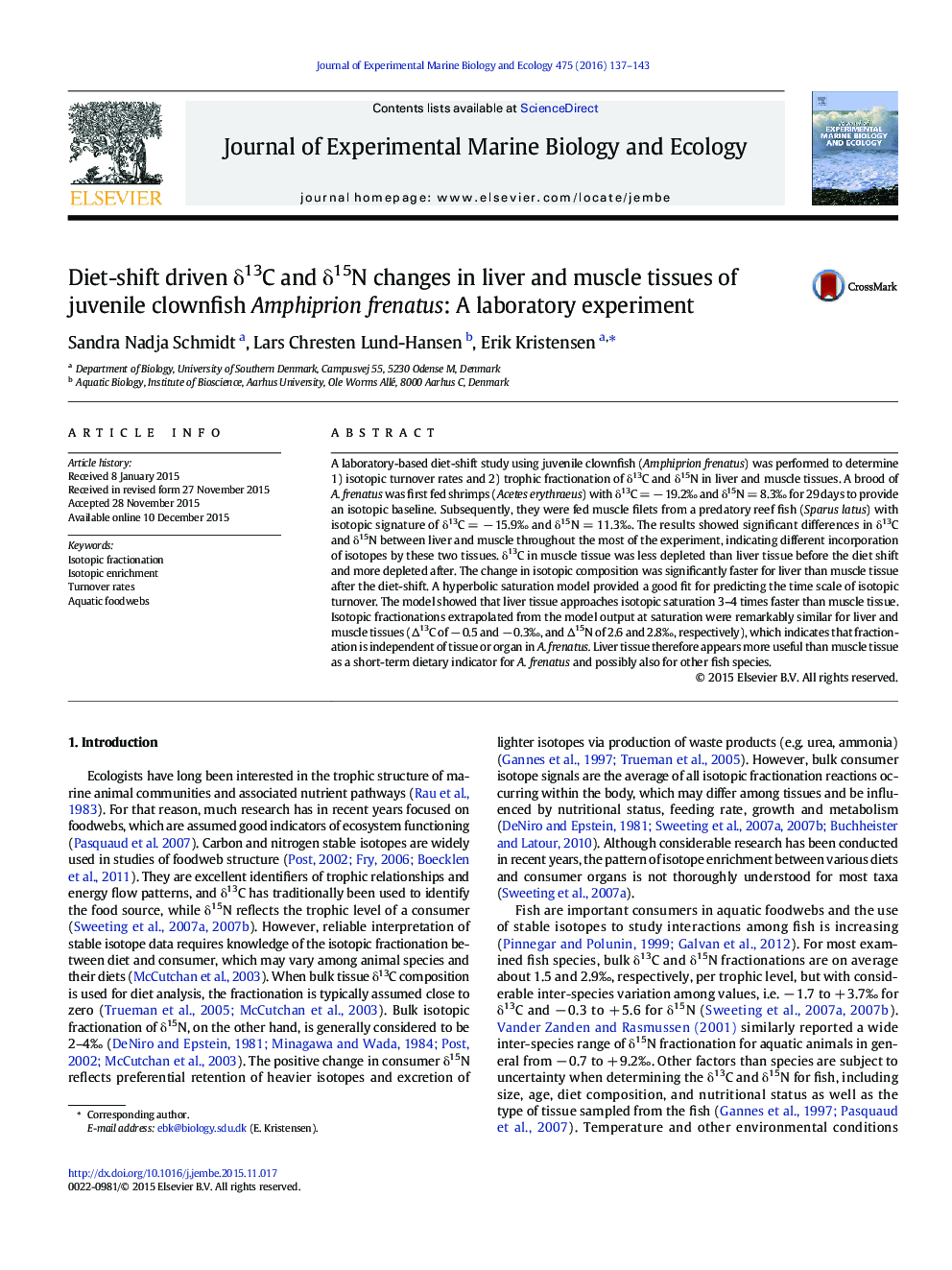| Article ID | Journal | Published Year | Pages | File Type |
|---|---|---|---|---|
| 4395289 | Journal of Experimental Marine Biology and Ecology | 2016 | 7 Pages |
•Incorporation of isotopes by clownfish liver and muscle tissues are different.•Isotopic saturation after diet shift is approached 4 times faster for liver than muscle tissue.•Liver and muscle tissue have Δ13C of -0.49 and -0.33 ‰, and Δ15N of 2.59 and 2.83 ‰, respectively.
A laboratory-based diet-shift study using juvenile clownfish (Amphiprion frenatus) was performed to determine 1) isotopic turnover rates and 2) trophic fractionation of δ13C and δ15N in liver and muscle tissues. A brood of A. frenatus was first fed shrimps (Acetes erythraeus) with δ13C = − 19.2‰ and δ15N = 8.3‰ for 29 days to provide an isotopic baseline. Subsequently, they were fed muscle filets from a predatory reef fish (Sparus latus) with isotopic signature of δ13C = − 15.9‰ and δ15N = 11.3‰. The results showed significant differences in δ13C and δ15N between liver and muscle throughout the most of the experiment, indicating different incorporation of isotopes by these two tissues. δ13C in muscle tissue was less depleted than liver tissue before the diet shift and more depleted after. The change in isotopic composition was significantly faster for liver than muscle tissue after the diet-shift. A hyperbolic saturation model provided a good fit for predicting the time scale of isotopic turnover. The model showed that liver tissue approaches isotopic saturation 3–4 times faster than muscle tissue. Isotopic fractionations extrapolated from the model output at saturation were remarkably similar for liver and muscle tissues (Δ13C of − 0.5 and − 0.3‰, and Δ15N of 2.6 and 2.8‰, respectively), which indicates that fractionation is independent of tissue or organ in A. frenatus. Liver tissue therefore appears more useful than muscle tissue as a short-term dietary indicator for A. frenatus and possibly also for other fish species.
